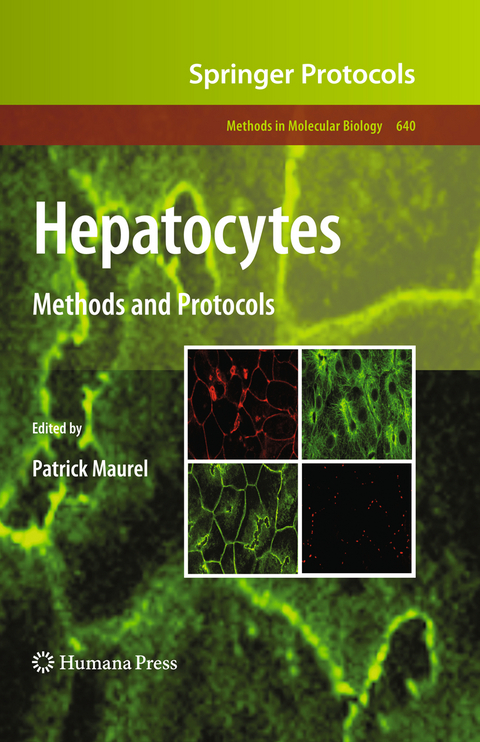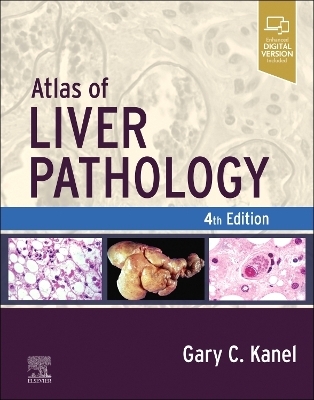Hepatocytes
Humana Press Inc. (Verlag)
978-1-60761-687-0 (ISBN)
Hepatocytes account for approximately 80% of the liver mass and play a significant role in various aspects of liver physiopathology, exhibiting unrivaled complexity and diversity of functions. In Hepatocytes: Methods and Protocols, expert researchers provide the reader with methods, technical protocols, and review chapters focusing on selected areas of hepatocyte biology including isolation, culture, differentiation and stem cells, and hepatocyte use in clinical, basic, and applied research. With a specific emphasis on human hepatocytes, the volume presents chapters covering subjects including hepatocyte culture models, cryopreservation methods, differentiation assessment, liver ontogenesis, production of hepatocytes from stem cells, drug/xenobiotic metabolism, toxicity and transport, bile acid and blood coagulation factor production, infection by HBV and HCV, humanized animals, biortificial liver devices, hepatocyte transplantation. As a volume in the highly successful Methods in Molecular Biology™ series, protocol chapters include brief introductions to their respective topics, lists of the necessary materials and reagents, step-by-step, readily reproducible laboratory protocols, and notes on troubleshooting and avoiding known pitfalls.
Comprehensive and cutting-edge, Hepatocytes: Methods and Protocols will be useful to all those who are currently using or planning to use human, or animal, hepatocytes to investigate any aspect of liver physiopathology or who are interested in liver development or liver stem cells and liver biotherapy.
General Review on In Vitro Hepatocyte Models and Their Applications.- Human Foetal Hepatocytes: Isolation, Characterization, and Transplantation.- Isolation and Culture of Primary Hepatocytes from Resected Human Liver Tissue.- Optimisation of the Cryopreservation of Primary Hepatocytes.- Cryopreservation of Human Hepatocytes for Clinical Use.- Hepatocyte Differentiation.- Reversible Manipulation of Apoptosis Sensitivity in Cultured Hepatocytes by Matrix-Mediated Manipulation of Signaling Activities.- Markers and Signaling Factors for Stem Cell Differentiation to Hepatocytes: Lessons from Developmental Studies.- Hepatic Stem Cells.- Hepatic Stem Cells and Liver Development.- Generation of Hepatocytes from Human Embryonic Stem Cells.- Isolation and Culture of Adult Human Liver Progenitor Cells: In Vitro Differentiation to Hepatocyte-Like Cells.- The HepaRG Cell Line: Biological Properties and Relevance as a Tool for Cell Biology, Drug Metabolism, and Virology Studies.- Transdifferentiation of Pancreatic Cells to Hepatocytes.- Evaluation of Drug Metabolism, Drug–Drug Interactions, and In Vitro Hepatotoxicity with Cryopreserved Human Hepatocytes.- The Use of Human Hepatocytes to Investigate Drug Metabolism and CYP Enzyme Induction.- The Use of Hepatocytes to Investigate UDP-Glucuronosyltransferases and Sulfotransferases.- The Use of Hepatocytes to Investigate Drug Uptake Transporters.- Metabonomic Studies on Human Hepatocyte in Primary Culture.- The Application of HepRG Cells in Evaluation of Cytochrome P450 Induction Properties of Drug Compounds.- The Use of Hepatocytes to Investigate Drug Toxicity.- The Use of Human Hepatocytes to Investigate Bile Acid Synthesis.- Use of Human Hepatocytes to Investigate Blood Coagulation Factor.- Use of Human Hepatocytes to InvestigateHCV Infection.- The Use of Hepatocytes to Investigate HDV Infection: The HDV/HepaRG Model.- Rodent Models of Liver Repopulation.- Chimeric Mice with Humanized Liver: Tools for the Study of Drug Metabolism, Excretion, and Toxicity.- Bioartificial Liver Support Systems.- Human Hepatocyte Transplantation.
| Erscheint lt. Verlag | 7.5.2010 |
|---|---|
| Reihe/Serie | Methods in Molecular Biology ; 640 |
| Zusatzinfo | XIX, 553 p. |
| Verlagsort | Totowa, NJ |
| Sprache | englisch |
| Maße | 178 x 254 mm |
| Themenwelt | Medizinische Fachgebiete ► Innere Medizin ► Hepatologie |
| Studium ► 1. Studienabschnitt (Vorklinik) ► Physiologie | |
| Naturwissenschaften ► Biologie | |
| ISBN-10 | 1-60761-687-4 / 1607616874 |
| ISBN-13 | 978-1-60761-687-0 / 9781607616870 |
| Zustand | Neuware |
| Haben Sie eine Frage zum Produkt? |
aus dem Bereich




